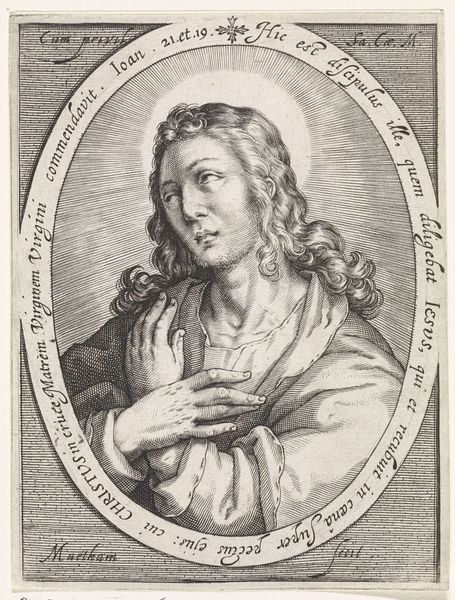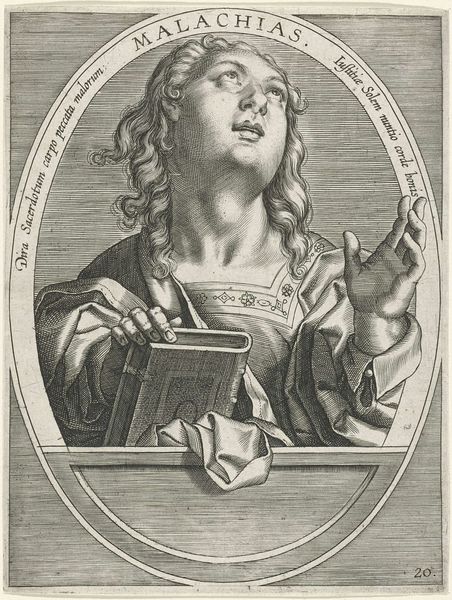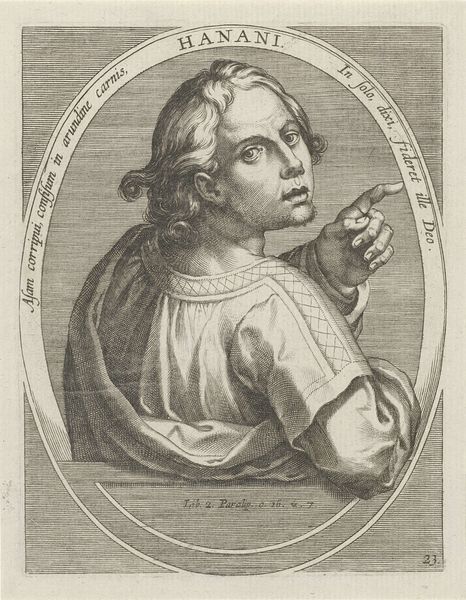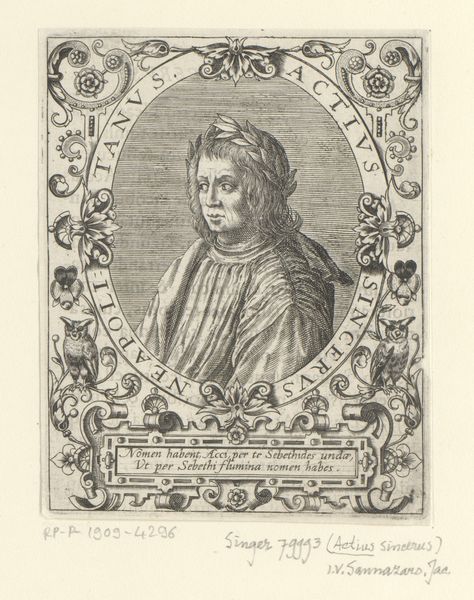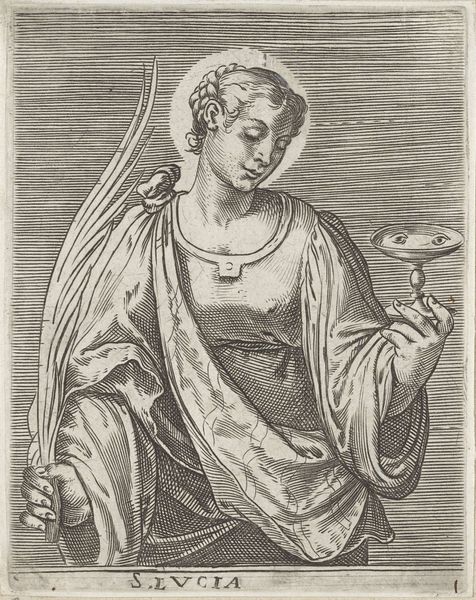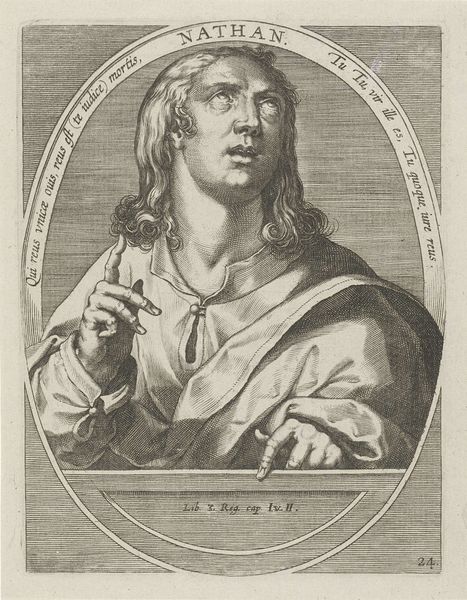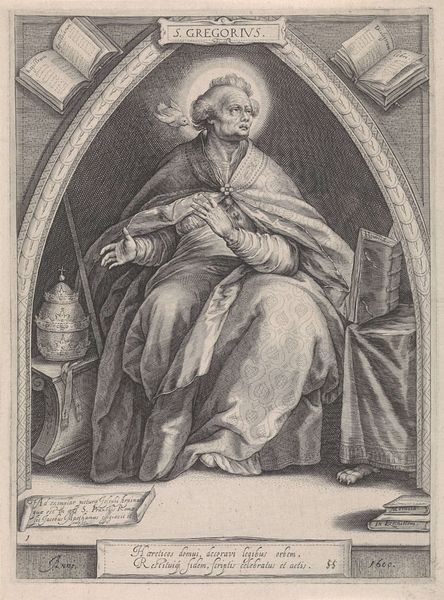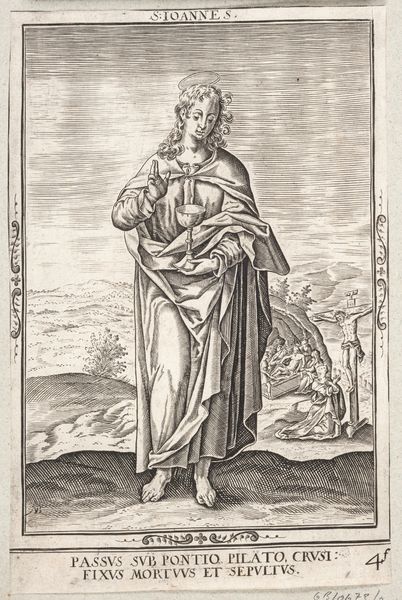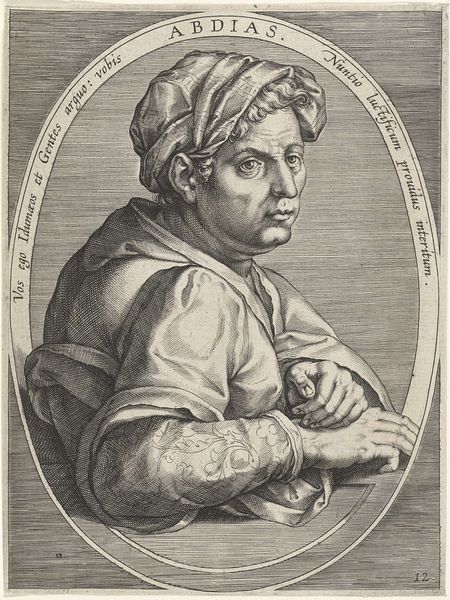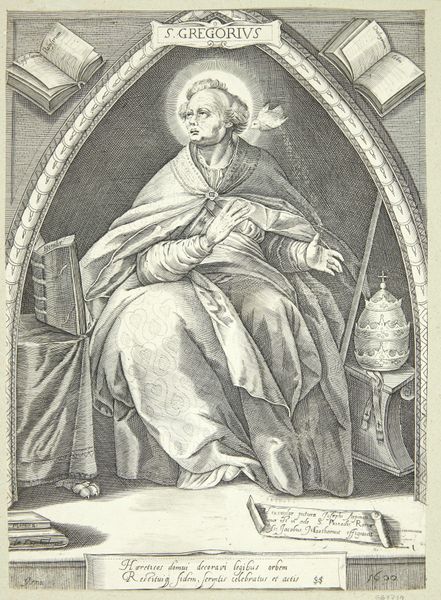
print, ink, engraving
#
portrait
#
baroque
# print
#
ink
#
pencil drawing
#
portrait drawing
#
engraving
#
portrait art
Dimensions: height 177 mm, width 132 mm
Copyright: Rijks Museum: Open Domain
Curator: Here we have Cornelis Galle I's engraving "Ezechiël," created around 1613. It is currently held at the Rijksmuseum. Editor: There is a compelling vulnerability in this portrait. The upwards gaze lends itself to a reading of prophetic inspiration, yet the tight oval frame almost confines that very expression. Curator: The setting, combined with his folded hands, draws focus to the act of receiving a divine message. His physical containment serves a specific representational function, reinforcing a message delivered at a historical moment. We see how the engraver used the very texture of the figure's drapery to convey not merely form, but the gravity of religious conviction. Editor: Absolutely. Galle’s masterful use of hatching and cross-hatching certainly captures the density of fabric, giving volume and substance to Ezechiël's physical presence within the picture plane. It is also difficult not to be drawn into the geometry of the overall design itself, a self-contained geometrical meditation. The contrast is striking, setting emotional confinement and ecstatic expression against sharp precision and compositional constraint. Curator: Such considerations point us to understanding the power that artists like Galle wielded during times of socio-religious upheavals, serving as both narrators and interpreters of powerful shifts. Galle actively shapes perceptions of spirituality by placing his subject so carefully within these graphic structures. The lettering too plays an active role in solidifying symbolic interpretation. Editor: I concur. By situating him both textually and pictorially, Galle gives dimension to a symbolic rendering of the sacred through the deliberate control of the frame itself. Looking at it now, there is almost a complete fusion of visual signifiers, producing an affect-laden image designed to shape not only spiritual outlook, but religious fervor as well. Curator: Exactly, and that convergence of form and message, reveals much about how art operates in a larger historical field. Editor: Indeed, a single engraving holding within its borders, complex reflections on humanity, history, and perhaps the formal mechanisms of representation itself.
Comments
No comments
Be the first to comment and join the conversation on the ultimate creative platform.

